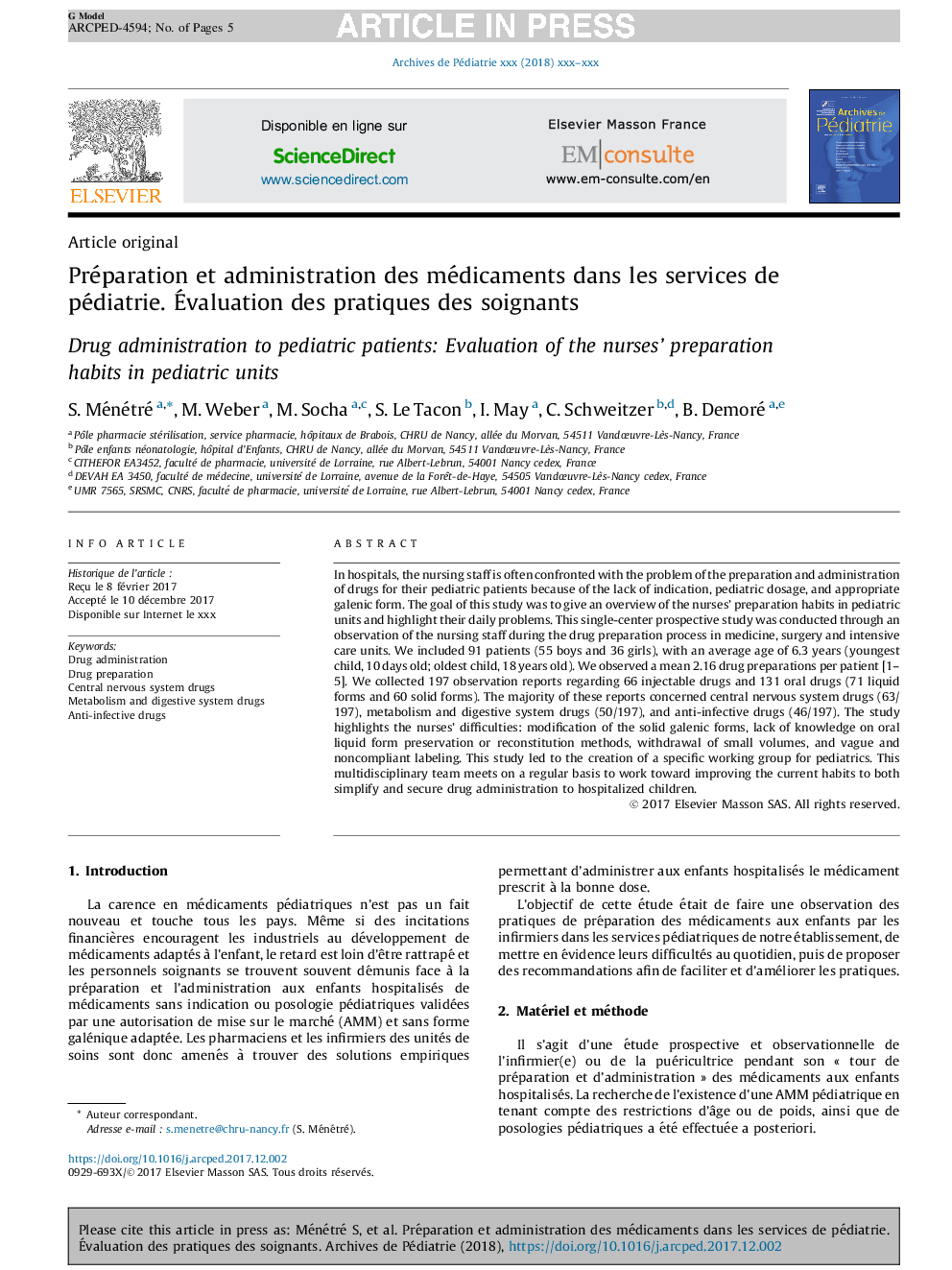| Article ID | Journal | Published Year | Pages | File Type |
|---|---|---|---|---|
| 8809177 | Archives de Pédiatrie | 2018 | 5 Pages |
Abstract
In hospitals, the nursing staff is often confronted with the problem of the preparation and administration of drugs for their pediatric patients because of the lack of indication, pediatric dosage, and appropriate galenic form. The goal of this study was to give an overview of the nurses' preparation habits in pediatric units and highlight their daily problems. This single-center prospective study was conducted through an observation of the nursing staff during the drug preparation process in medicine, surgery and intensive care units. We included 91Â patients (55Â boys and 36Â girls), with an average age of 6.3Â years (youngest child, 10Â days old; oldest child, 18Â years old). We observed a mean 2.16Â drug preparations per patient [1-5]. We collected 197Â observation reports regarding 66Â injectable drugs and 131Â oral drugs (71Â liquid forms and 60Â solid forms). The majority of these reports concerned central nervous system drugs (63/197), metabolism and digestive system drugs (50/197), and anti-infective drugs (46/197). The study highlights the nurses' difficulties: modification of the solid galenic forms, lack of knowledge on oral liquid form preservation or reconstitution methods, withdrawal of small volumes, and vague and noncompliant labeling. This study led to the creation of a specific working group for pediatrics. This multidisciplinary team meets on a regular basis to work toward improving the current habits to both simplify and secure drug administration to hospitalized children.
Related Topics
Health Sciences
Medicine and Dentistry
Perinatology, Pediatrics and Child Health
Authors
S. Ménétré, M. Weber, M. Socha, S. Le Tacon, I. May, C. Schweitzer, B. Demoré,
